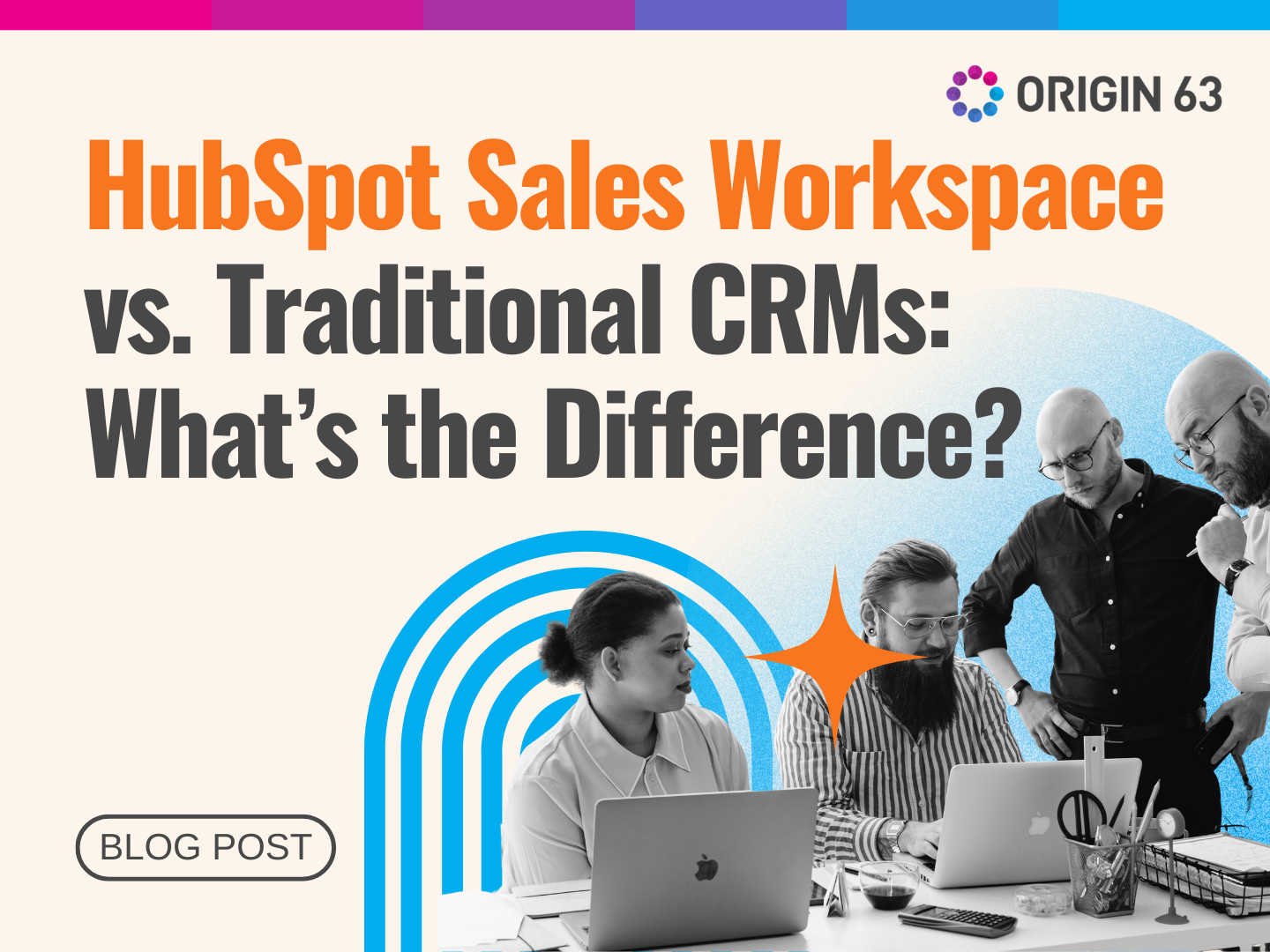Managing service tickets efficiently requires clear ownership, but syncing this data between platforms can be a challenge.
A client in the service industry faced issues syncing Salesforce case owners with HubSpot ticket owners. Although case records synced between the systems, ownership details didn’t transfer correctly, leading to confusion and inefficiencies.
Origin 63 created a streamlined solution to ensure accurate ownership mapping, bridging the gap between Salesforce and HubSpot.
The Challenge: Mismatched Data Structures Creating Ownership Confusion
The client needed to ensure that ticket ownership details from Salesforce were correctly reflected in HubSpot. However, several obstacles made this difficult:
- Data Structure Differences: Salesforce uses unique User IDs to define case ownership, while HubSpot identifies owners by email addresses. This mismatch meant ownership data couldn’t transfer directly between platforms.
- Lack of Native Support: The standard Salesforce-HubSpot integration didn’t include support for syncing ticket ownership, forcing teams to rely on manual processes or additional configurations.
This gap in syncing capabilities led to inefficient workflows, inaccurate reporting, and miscommunication between teams. To maintain data accuracy and streamline processes, the client needed a reliable solution that could bridge the ownership data across platforms.
How Origin 63 Solved the Problem with a Structured Process
Origin 63 implemented a simple but effective approach using export, transformation, and import techniques. This ensured accurate ownership mapping without requiring complex third-party tools or API work.
Step 1: Exporting Data from Salesforce and HubSpot
The first step was gathering the necessary data:
- From Salesforce, case data was exported, ensuring that Case Owner IDs and Salesforce Object IDs were included. This export provided the foundation for ownership mapping.
- From HubSpot, ticket data was exported, including Ticket Record IDs and corresponding Salesforce Object IDs. This provided a clear view of existing tickets and their relationships to Salesforce cases.
This dual export created a complete data set, ready for transformation.
Step 2: Transforming Data for Accurate Mapping
The exported data required transformation to align ownership details across platforms:
- The Salesforce user list was exported and used to map Case Owner IDs to User Emails. Excel’s VLOOKUP function was key to this step, allowing for a quick and efficient matching process.
- Once Salesforce owners were mapped to email addresses, the data was matched with HubSpot’s ticket data using the shared Salesforce Object ID as a common key.
This ensured that every Salesforce case was accurately connected to the correct ticket in HubSpot, ready for import.
Step 3: Importing Data into HubSpot for Accurate Ticket Ownership
After transformation, the final import file was prepared. It included:
- HubSpot Ticket Record IDs for precise updates.
- Owner Emails to correctly assign ticket ownership in HubSpot.
Before importing, confirmation was sought from the client regarding the status of the Salesforce case owners. If an owner was inactive, the client was consulted to decide whether to map ownership to an active user or leave the ownership field blank in HubSpot.
Once confirmed, HubSpot’s import tool was used to update ticket owners accurately and efficiently.
How the Tools Worked Together for a Seamless Process
Salesforce Object IDs served as the central link, connecting cases in Salesforce to tickets in HubSpot. Excel played a role in transforming and mapping the data, ensuring that ownership details matched correctly across platforms.
HubSpot’s Ticket Record ID ensured that ownership updates were applied accurately, preventing duplicates. This cohesive approach created a reliable, streamlined process for aligning ownership details across both platforms.
Here’s why this solution stood out:
Efficient and Simple Workaround
Instead of using complex APIs or third-party integrations, the solution leveraged existing Salesforce and HubSpot features combined with Excel’s data transformation capabilities. This minimized complexity while maintaining accuracy.
Scalable for Growing Ticket Volumes
The process was designed to handle large volumes of tickets. Once the structure was in place, repeating the process for future data imports became straightforward, ensuring scalability.
Cross-Platform Alignment Without Disrupting Native Integrations
Focusing on structured exports and imports, the solution worked seamlessly with existing integrations. This meant there was no risk of disrupting core operations, and the approach remained flexible for future updates.
Other Challenges This Solution Could Solve
The process developed for syncing ticket ownership also has broader applications, including:
- Data Enrichment: Enhancing HubSpot data with additional Salesforce fields not natively synced, without the need for API development.
- Historical Data Migration: Transferring historical ownership data or other key properties from Salesforce to HubSpot for consistency and reporting.
- Multi-Platform Ownership Mapping: Applying the same approach to map ownership data across other platforms, such as Zendesk or Freshdesk, ensuring consistent ownership tracking.
This approach ensures flexibility and adaptability across multiple systems and scenarios.
The Results: Consistent Ownership and Improved Efficiency
The solution delivered immediate benefits for the client’s service team.
Accurate Ticket Ownership Across Platforms
Every ticket in HubSpot accurately reflected its owner from Salesforce. This reduced confusion, minimized manual corrections, and ensured a more reliable service process.
Faster Updates with Less Manual Work
Leveraging automation through structured imports ket the client reduced the time spent on manual ticket updates. This improved efficiency while reducing the risk of human error.
Greater Clarity for Service Teams
With consistent ownership information, service teams had greater clarity about who was responsible for each ticket. This improved internal workflows and helped ensure smoother client interactions.
Scalable Process for Long-Term Success
The structured approach means the client can continue using the same process for future ownership updates. As new users or tickets are added, the system can adapt quickly and efficiently.
A Simple Process That Delivered Big Results
This solution didn’t require complicated systems or third-party tools. Focusing on structured exports, transformations, and imports, Origin 63 delivered a simple, scalable solution that streamlined ownership mapping and improved service efficiency.
Ready to Simplify Your Ticket Ownership Mapping?
Accurate ownership mapping improves service quality and strengthens internal workflows. Origin 63 helps businesses bridge gaps between platforms with tailored solutions that simplify complex processes.
If you're ready to streamline your ownership mapping and reduce manual work, contact us to learn how we can help.

.png?width=450&height=450&name=Round%20Blog%20Thumbnail%20(62).png)


.png)
.png)








.png?width=90&height=90&name=Arrows%20Partner%20Badge-test%20(1).png)

